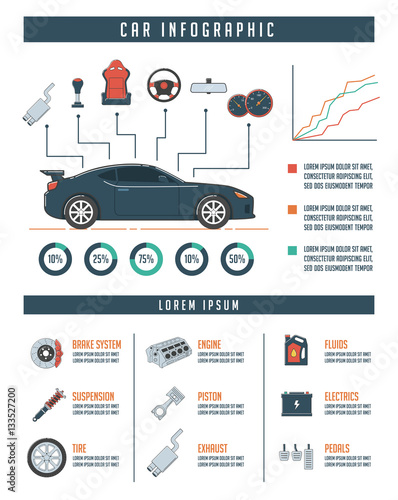Recognizing Your Car'S Caution Lighting: What Do They Really Mean?
Recognizing Your Car'S Caution Lighting: What Do They Really Mean?
Blog Article
Writer-Hartley Dalgaard
When you lag the wheel, those glowing warning lights on your dashboard can be a bit bewildering. Do you know what they're trying to tell you about your car's health? Comprehending vehicle detailer of these lights is essential for your safety and security and the longevity of your car. So, the following time one of those lights appears, wouldn't you intend to decode its message accurately and take the needed steps to resolve it?
Common Warning Lights and Interpretations
Determine common warning lights in your car and recognize their significances to ensure risk-free driving.
One of the most typical caution lights consist of the check engine light, which signals issues with the engine or discharges system. If this light comes on, it's important to have your lorry inspected without delay.
The oil pressure cautioning light shows low oil stress, requiring prompt focus to stop engine damages.
A flashing battery light might recommend a defective charging system, potentially leaving you stranded otherwise addressed.
The tire pressure surveillance system (TPMS) light signals you to low tire pressure, affecting automobile stability and fuel efficiency. Overlooking this can bring about unsafe driving problems.
https://rivervpkdx.blog-ezine.com/30063434/the-makeover-of-vehicle-detailing-practices-over-the-last-10-years indicates a problem with the anti-lock stopping system, jeopardizing your capacity to quit promptly in emergency situations.
Finally, the coolant temperature cautioning light warns of engine overheating, which can lead to severe damages otherwise solved swiftly.
Comprehending these usual caution lights will certainly help you address issues quickly and preserve secure driving problems.
Importance of Prompt Focus
Understanding the usual warning lights in your cars and truck is just the first step; the value of without delay resolving these warnings can't be stressed sufficient to ensure your security when driving.
When a warning light illuminates on your dashboard, it's your car's means of communicating a potential concern that requires attention. Disregarding these cautions can lead to more severe problems later on, compromising your safety and security and possibly costing you more in repairs.
Motivate attention to advising lights can stop break downs and mishaps. For example, a blinking check engine light might suggest a misfire that, if left unattended, could create damage to the catalytic converter. Resolving this promptly can conserve you from a costly repair work.
In a similar way, a brake system warning light may indicate reduced brake fluid or worn brake pads, crucial parts for your safety when driving.
DIY Troubleshooting Tips
If you observe a caution light on your control panel, there are a couple of DIY troubleshooting tips you can attempt before looking for professional help.
The primary step is to consult your vehicle's handbook to recognize what the certain caution light suggests. Sometimes https://www.michigan.gov/ag/consumer-protection/consumer-alerts/consumer-alerts/auto/lemon-law can be as easy as a loose gas cap setting off the check engine light. Tightening up the gas cap might fix the trouble.
Another usual problem is a low battery, which can cause numerous advising lights. Examining the battery connections for corrosion and ensuring they're protected may repair the trouble.
If a caution light lingers, you can attempt resetting it by disconnecting the cars and truck's battery for a couple of minutes and then reconnecting it. Additionally, inspecting your vehicle's liquid levels, such as oil, coolant, and brake liquid, can assist troubleshoot advising lights connected to these systems.
Verdict
In conclusion, comprehending your cars and truck's caution lights is important for maintaining your automobile running smoothly and securely. By promptly dealing with these alerts and knowing what they mean, you can avoid costly repair work and potential malfunctions.
Remember to consult your auto's handbook for particular information on each cautioning light and take action appropriately to ensure a hassle-free driving experience.
Keep informed, stay secure on the road!
